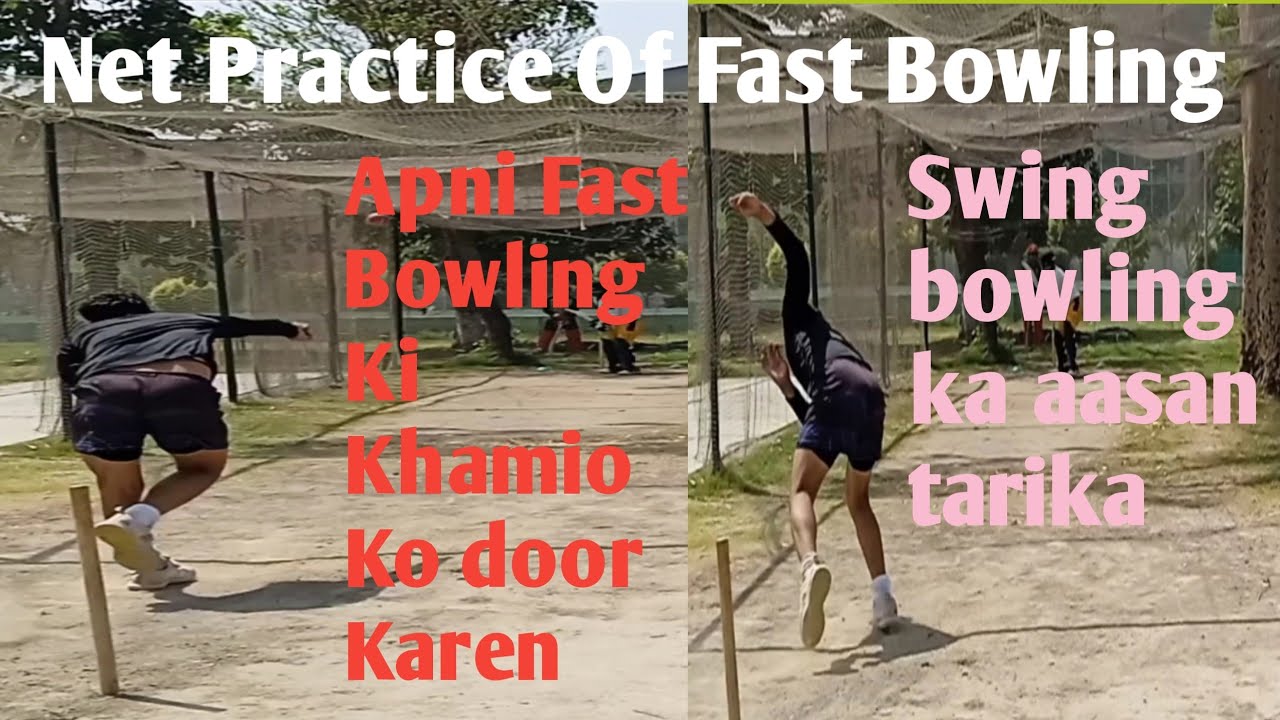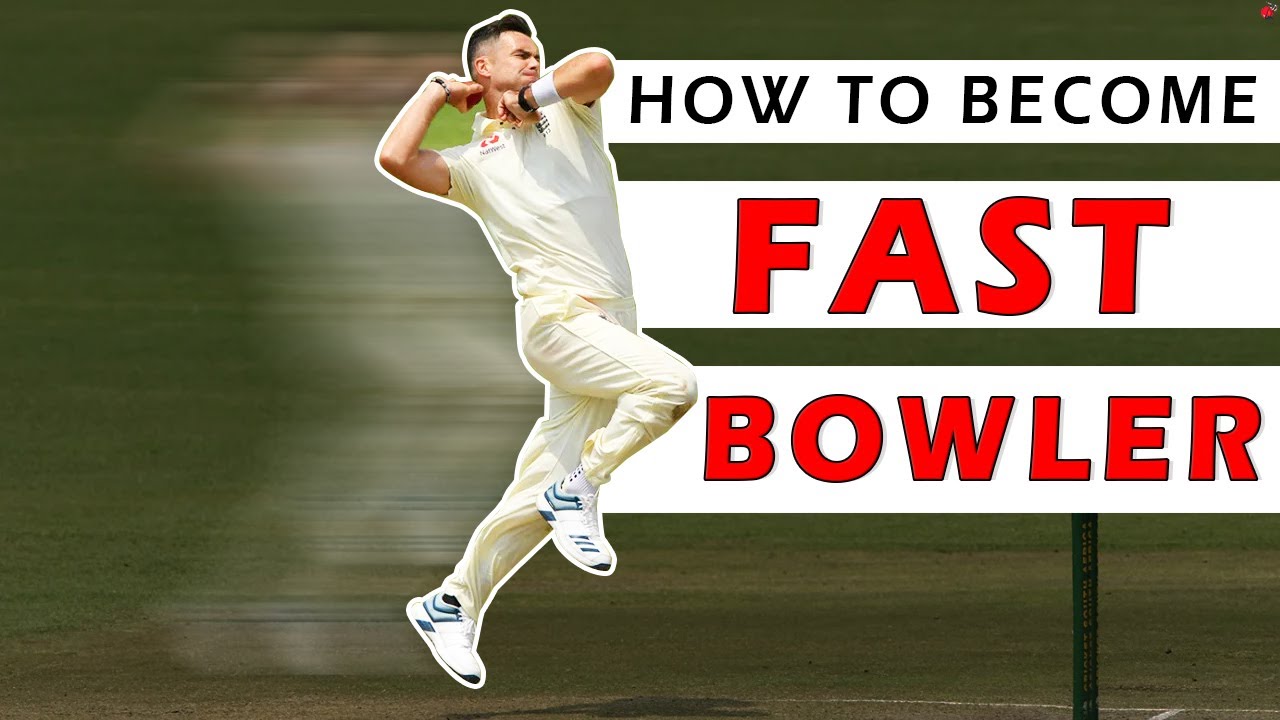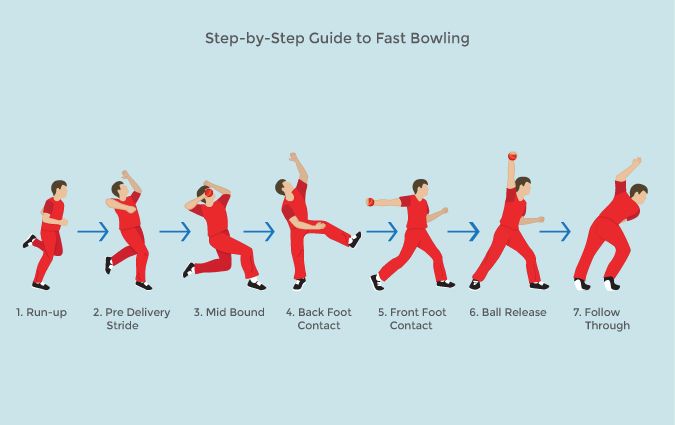Fast bowling is one of the most thrilling aspects of cricket. It demands a potent mix of speed, skill, and strategy. At its core, fast bowling involves delivering the ball with high velocity to outsmart the batsman. Whether you're a budding cricketer or someone with a keen interest in the game, grasping the essentials of fast bowling can elevate your performance to a professional level. In this section, we'll explore what fast bowling entails, the roles it plays in cricket, and why mastering this skill is vital for any serious bowler.
Understanding the Mechanics of a Fast Ball

To truly master the fast ball, it's essential to delve into the mechanics behind it. Fast bowling isn't just about raw speed; it involves a carefully orchestrated set of movements that maximize both power and accuracy. Here’s a breakdown of the key components:
- Run-Up: The approach to the wicket is crucial. A consistent and dynamic run-up helps to build momentum.
- Body Position: Keep your body balanced and your head still as you approach the crease. This is vital for control and direction.
- Delivery Stride: This is the step where most speed is generated. A longer stride can enhance power, but it should be controlled.
- Front Arm Position: Your non-bowling arm plays a critical role in balance. It should move upwards as you deliver the ball.
- Ball Release: Timing is everything. Releasing the ball at the peak of your bowling action will maximize speed.
Consider practicing these mechanics through repetition and paying attention to how they feel as you bowl. Here’s a quick table summarizing the elements to adjust for improved performance:
| Mechanism | Tip for Improvement |
|---|---|
| Run-Up | Keep it consistent and rhythmical. |
| Body Position | Stay upright and maintain a stable head position. |
| Delivery Stride | Experiment with stride length to find your sweet spot. |
| Front Arm Position | Use your front arm for balance; don't let it drop. |
| Ball Release | Practice your timing to release the ball at its highest point. |
Mastering these mechanics can turn you into a powerful fast bowler, ready to take on any challenge at the crease. With practice and focus, you'll be able to bowl not just fast, but effectively and strategically.
Essential Techniques for Fast Bowling

Fast bowling is a unique blend of art and science, requiring a mix of technique, physical fitness, and mental toughness. Here are some essential techniques that can elevate your fast bowling game to a professional level:
- Grip: Your grip is foundational. Hold the ball with your index and middle fingers spread across the seam, and let your ring and little fingers rest lightly on the seam. This grip allows for better control and seam movement.
- Run-Up: A smooth, controlled run-up accelerates your delivery without wasting energy. Practice a run-up that feels comfortable and helps you build momentum. Aim for a consistent rhythm, transitioning smoothly into your bowling action.
- Bowling Action: Focus on a high arm action and a powerful follow-through. Keeping your bowling arm straight during the delivery will ensure that the seam is pointing in the direction you intend. Make sure your shoulders are aligned with the target.
- Delivery Stride: Your front foot should land just outside the line of the stumps. This helps generate pace and swing. A balanced delivery stride will enhance your accuracy as well.
- Follow Through: After the ball is released, allow your arm to extend fully. This promotes the necessary rotation of your body and helps prevent injuries by reducing shoulder strain.
Mastering these techniques requires patience and practice, but once you have them down, you'll notice significant improvements in your speed and accuracy.
Practicing Your Bowling Skills

Practice makes perfect, especially when it comes to nailing down your fast bowling skills. Here are some effective strategies to enhance your practice routine:
| Practice Method | Description |
|---|---|
| Shadow Bowling: | Visualize your bowling action without the ball. Focus on your run-up, delivery stride, and follow-through. |
| Target Bowling: | Set specific targets on the pitch to help improve your accuracy. Aim for different lengths, such as Yorker, bouncer, or full-length deliveries. |
| Speed Drills: | Incorporate drills that focus on explosive speed and acceleration. Sprints coupled with your bowling run-up can help build speed. |
| Video Analysis: | Record your bowling sessions and analyze your technique. This can reveal areas needing improvement that you may not feel during practice. |
| Conditioning: | Engage in fitness programs focused on endurance, strength, and flexibility to support your bowling action. |
Consistency is key when practicing. Set weekly goals for each session and track your progress. Finally, don’t forget to have fun! Enjoy the journey of becoming a master fast bowler.
Common Mistakes to Avoid When Bowling Fast
Bowling fast in cricket isn't just about speed; it's an intricate blend of technique, composure, and strategy. As you embark on this journey to become a pro fast bowler, it's vital to steer clear of the common pitfalls that can hinder your performance. Let’s break down some of these mistakes and how to avoid them:
- Overstriding: Many bowlers, in their quest for speed, try to cover too much ground in their run-up. This can lead to losing balance and control. Instead, focus on a smooth, rhythmic approach. Aim for a consistent stride that allows you to maintain stability.
- Poor Wrist Position: Your wrist plays a crucial role in delivering the ball with pace. Keep your wrist firm and ensure your fingers are behind the seam to achieve maximum power and direction. A floppy wrist can lead to slower speeds and unwanted spin.
- Neglecting Fitness: Fast bowling is physically demanding. Neglecting fitness can lead to injuries and fatigue. Incorporate strength training and flexibility exercises into your routine to enhance your performance on the field.
- Lack of Variation: Sticking to just one type of delivery can make you predictable. Work on different types of deliveries like yorkers, bouncers, and slower balls. This variety keeps batsmen on their toes.
- Ignoring Mental Preparation: Fast bowling isn't just physical; it’s mental too. Many bowlers forget to focus on their mindset. Engage in visualizations and mental rehearsals to prepare yourself for high-pressure situations.
By recognizing these common mistakes, you can refine your technique and elevate your game. Remember, every player makes errors; what’s important is to learn and adapt constantly!
Conclusion: Becoming a Pro Fast Bowler
Mastering the art of fast bowling takes dedication, practice, and a thirst for improvement. Throughout this journey, it's crucial to understand that becoming a pro fast bowler isn’t solely about unleashing raw speed but also about honing your skills, understanding the game, and developing a strategic mindset.
To put it all into perspective, here’s a quick checklist to summarize:
| Key Components | Focus Areas |
|---|---|
| Technique | Optimize your run-up and arm action. |
| Fitness | Maintain strength, endurance, and flexibility. |
| Mindset | Practice mental toughness and focus. |
| Variation | Add new deliveries and strategies to your toolkit. |
| Consistent Practice | Set up drills and practice scenarios regularly. |
Remember, every great fast bowler started somewhere. Through hard work, determination, and a commitment to continuous learning, you can elevate your game to the pro level. Embrace the challenges, enjoy the process, and before long, you'll find yourself consistently hitting those fast bowling benchmarks. Now grab that ball and bowl like a pro!










